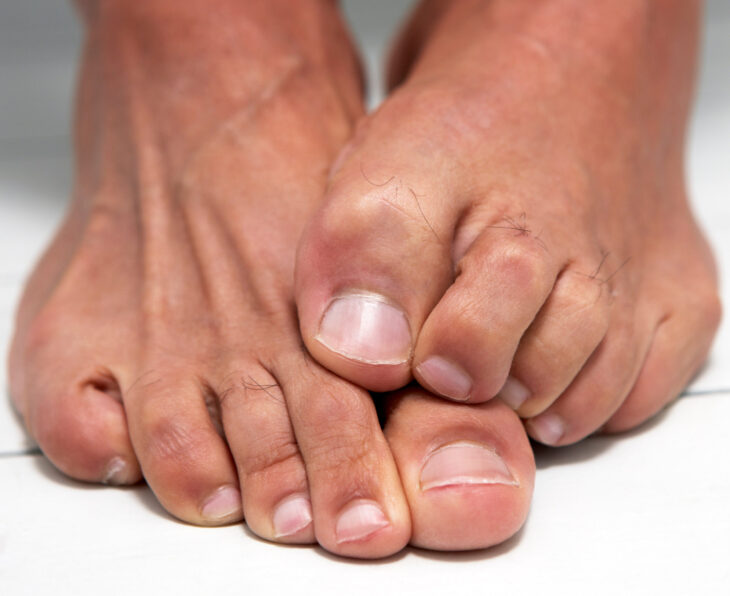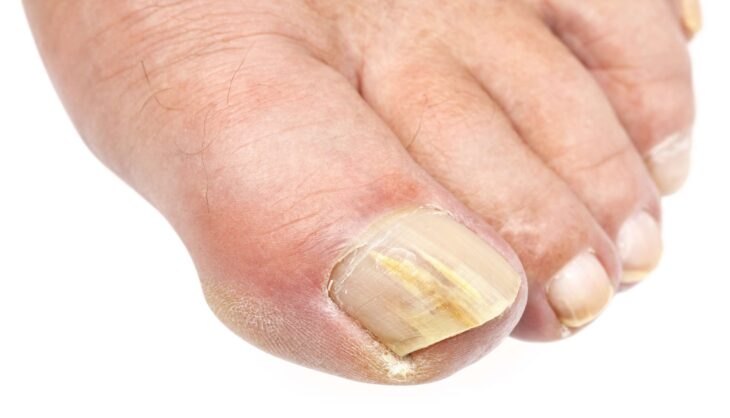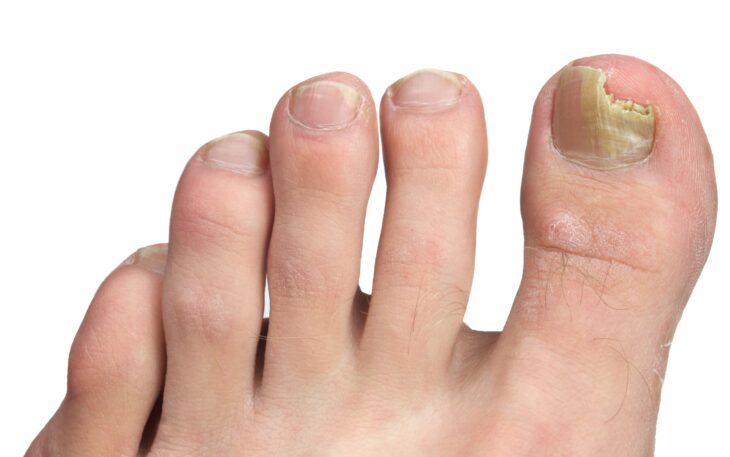Nail fungus is more common than you might think. It starts with nail discoloration turning white or yellow. At first, there is just a spot under the finger or toenail. If nail fungus accelerates, the edges start to crumble and the nail thickens. This can happen to multiple nails at once and can be very painful.
If you face such a problem, you need to understand how much your nail is bothering you. If it is mild, simple self-care will suffice. However, if you experience excruciating pain, you will need treatment. Nail fungus is called onychomycosis in medial terms and if it spreads between your toes and the skin of your feet, it is referred to as an athlete’s foot.
Contents
Symptoms
In order to identify nail fungus in one or more of your finger or toenails, notice if your nails have:
- Thickened overall
- Decolored to a yellowish-brown color or has become white
- Crumbled, tagged, or brittle
- Reshaped to look untidy
- Picked on a darker color due to debris accumulating under the nails
- Started to smell foul.
Although nail fungus is more common in the toenails, it can sometimes your fingernails too. This can be due to an allergic reaction after using harsh soap.

Source: nytimes
Seeking Medical Guidance
Once you notice nail fungus in any of your nails, at home self-care, often helps. However, it only works when the nail fungus is mild and does not cause you much pain. If you notice that it is not helping and the fungus continues to spread, it is time to get a doctor’s appointment. This is especially important if you are diabetic.
Nail infection can develop due to various reasons. Fungal organisms like fungi are the most common causes. Dermatophyte is the most common fungus including yeast and molds that cause nail fungus. There is no determinant of age for when it can develop but you will commonly notice this condition in older adults.
As the nails age over the period of time, they become dry and brittle causing fungi to enter and cause infection. Other factors that lead to nail fungus are poor blood circulation, environment, and weakened immune system. An athlete’s foot can cause fungus to spread to one or more nails causing toenail fungus. Keep in mind that you cannot catch the infection from anyone else. It develops on its own over time.
Risk Factors
The following factors can contribute to an increased risk of developing nail fungus:
- Aging: The reason behind developing nail fungus is the reduced blood flow and years of exposure to fungi while the growth of nails slows down.
- Sweat: People who sweat more are more likely to develop toenail fungus. You can prevent this from happening by using tricks to prevent heavy sweating.
- Athlete’s Foot: If you have a history of developing athlete’s foot, you are more likely to suffer from toenail fungus.
- Exposure to Damp Floors: If you have an active person and are exposed to wet floors like the shower rooms of gyms and swimming pools, you are more likely to get toenail fungus.
- Skin Conditions: If you have mild skin conditions like psoriasis, you are a risk of developing nail fungus.
- Diabetes: If you have diabetes, blood circulation problems, or a weak immune system, your risk increases.

Source: verywellhealth
Complications
If the nail fungus becomes severe, your nails can be permanently damaged. The worst part of nail fungus is that it has the tendency to spread to other parts of the skin. Mainly due to a suppressed immune system including a history of diabetes and other medical conditions.
Being a diabetic is a challenge itself as it causes the blood flow to slow down. Other risks like bacterial skin infection like cellulitis also arise. In case you hurt your feet in any way, it is best to see a doctor before an infection starts. It best to get professional help before things get serious.
Prevention is always better than a cure. The following habits can reduce your chances of developing nail fungus in both toes and fingers. These also help in preventing athlete’s foot.
- Keep your hands and feet clean at all times. In case you touch an infected nail, make sure to wash your hand properly. Moisturize your hands and feet and ensure that all the nails are also moisturized thoroughly.
- Always trim your nails straight and smooth out the edges using a nail filer. Never clip off the edges allowing space for your nail to grow inwards. Make sure your nail clipper is sterilized after or before every use.
- Sweat absorbing socks are easily available in the market. Invest in those so your feet stay dry at all times.
- Wear shoes that are made from breathable material.
- Avoid going barefoot in shower rooms in public showers like in the gym or beach.
When you see a doctor, he or she will examine your nails in order to diagnose the problem. Expect your doctor to take samples from your infected nails and send a sample to the lab for examination. There are three things that commonly cause nail fungus, they are psoriasis, yeast, and bacteria. This can only be determined by examination in a lab.
Treatment Options
Nail fungus conditions can often be difficult to treat. You need to see your doctor if over the counter medications and self-care does not help. The treatment will depend on the severity of your condition, and keep in mind that nail infection often comes back.

Source: derma
Medication
Antifungal medication is the most common course of action when treating the nail fungus, click here for more information. Your doctor will prescribe drugs to take orally or to apply on your toes and fingers. However, if the condition is severe, you will get a combination of both.
Oral Antifungal Drugs
This is the preferred choice of medication because it helps in clearing the infection faster and encourages new nail to grow. The new nail growth is healthy and free of infection. The results start to show after a long time, but they will be there. These drugs are always prescribed, so do not take them without your doctors’ directions.
Medicated Nail Cream
This cream helps in healing the fungus faster. The nail needs to be thin for the cream to penetrate the surface. The doctor often prescribes a nail cream in addition to oral drugs.
Surgery
In extreme conditions, the doctor may suggest the removal of the infected nail in order to apply medicine to the toe or finger. If you experience unbearable pain, you may undergo a small surgery for permanent nail removal.
